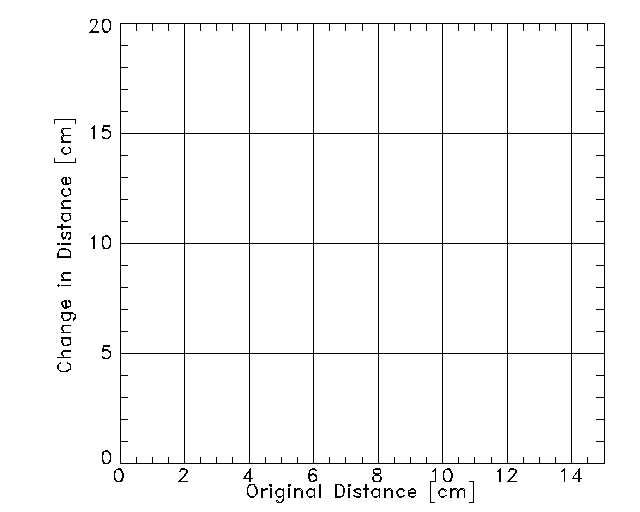ISP 205, Section 3, Spring 1997
ACTIVITY: EXPANSION of the UNIVERSE
Work in groups of three. Each group needs one balloon and one ruler. One
person handles the balloon, one person marks and measures, and one person
records the results.
Name: ________________________
Student Number: ______________
Name: ________________________
Student Number: ______________
Name: ________________________
Student Number: ______________
In this activity we model the UNIVERSE as the TWO-DIMENSIONAL SURFACE
of a balloon. Blow up the balloon to about a 4 inch diameter. Twist
the neck and hold it closed so that no air escapes, but do NOT make a
permanent knot because you will need to blow it up some more. Make SIX
marks on its surface to represent clusters of galaxies and label them
A-F. [Avoid placing any near the neck of the balloon.]
A. Measure and record the distances (in cm) from cluster A to each of
the other 5 clusters.
B. Repeat step 1 measuring the distances (in cm) from cluster F to each
of the other clusters.
C. Now blow up the balloon up more, to a diameter of about 8 inches.
Measure the distances between the same clusters again and record them.
D. Calculate the increase in the distance and record that as well.
Use the chart provided on the other side of this page
Clusters Distance Distance Change in
(small) (large) Distance
(cm) (cm) (cm)
A - B -------- -------- --------
A - C -------- -------- --------
A - D -------- -------- --------
A - E -------- -------- --------
A - F -------- -------- --------
Clusters Distance Distance Change in
(small) (large) Distance
(cm) (cm) (cm)
F - A -------- -------- --------
F - B -------- -------- --------
F - C -------- -------- --------
F - D -------- -------- --------
F - E -------- -------- --------
- Are all the other clusters moving away from cluster A?
YES _X___ NO ____
- Are all the other clusters moving away from cluster F?
YES _X___ NO ____
- Is there a cluster that could be considered to be at the center of the
universe as represented by the surface of the balloon?
YES ____ NO _X___
To conclude, just because it looks like all distant galaxies are
receding from our Galaxy, doesn't necessarily mean that our Galaxy
is the center of the Universe. If the entire Universe itself were
expanding, it would look as if all distant galaxies were moving
away no matter which galaxy you were located on.
- Finally, on the graph below plot the change in distance verses the
initial distance for both sets of measurements. Use one symbol for
the measurements from cluster A and another for the measurements from
cluster F.
Draw the best straight line you can that comes closest to the
most points. Is a straight line a good representation of your
measurements?
YES _X___ NO ____
Some groups drew many lines in a "connect-the-dots" approach. The point
of drawing a line is to help you see a general trend in the data, which
are individual observations. Lots of lines connecting the dots will not
help you do this, and none of the graphs in the book are drawn that way.

 Visions of the Universe
Visions of the Universe
Beth Hufnagel's
home page,
email: hufnage4@pilot.msu.edu
Bob Stein's home page
,
email: steinr@pilot.msu.edu
